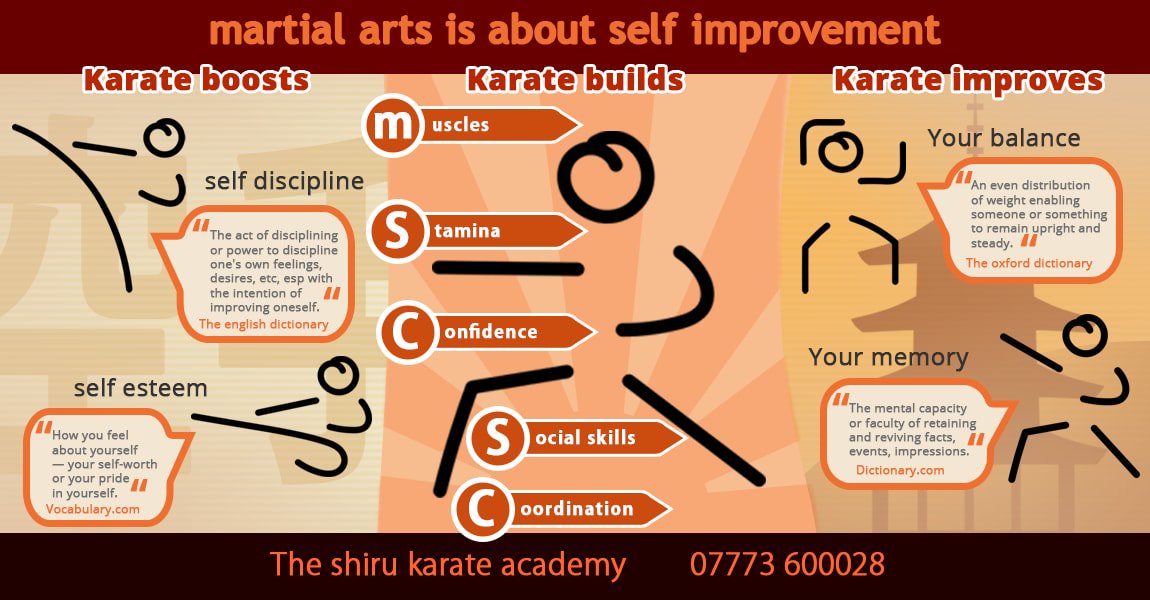The Journey And Transformation Of Martial Arts: Discovering Its Historical Foundations And Modern Techniques
The Journey And Transformation Of Martial Arts: Discovering Its Historical Foundations And Modern Techniques
Blog Article
Content Writer-Busk Whitaker
Step into the world of martial arts, where ancient origins and modern techniques collide in an electrifying journey of discipline and self-discovery.
As you explore the history and advancement of this captivating art form, prepare to be captivated by the cultural impacts, technological innovations, and extensive approach that have shaped it over centuries.
From the battlefields of old civilizations to the training premises of today, martial arts have stood the test of time, regularly adjusting and expanding.
Each strike, each motion, lugs with it the weight of numerous years of tradition and knowledge, gave with generations. This is a story of resilience, of warriors that looked for not just physical expertise, yet likewise self-confidence and harmony.
Join us on this amazing exploration as we reveal the secrets, the legends, and the transformational power of martial arts.
Prepare yourself to be inspired, challenged, and permanently altered by the history and development of martial arts.
Cultural Influences on Martial Arts
As you discover the history and advancement of martial arts, you'll promptly discover the fascinating methods which social influences have shaped these battle methods.
From the old people of China and India to the much more current advancements in Japan and Brazil, martial arts have been heavily influenced by the cultures in which they came from.
For instance, Chinese martial arts, such as Martial Art and Tai Chi, are deeply rooted in the philosophy of Taoism and the principle of Yin and Yang.
In contrast, Japanese martial arts, like Martial arts and Judo, reflect the samurai warrior traditions and the values of self-control and honor.
Likewise, Brazilian martial art, Capoeira, integrates elements of African dance and songs, reflecting the social heritage of African slaves in Brazil.
These social influences not only provide each fighting style its special characteristics however likewise supply a much deeper understanding of the historic and social contexts in which they evolved.
Technical Improvements and Martial Arts
With the increase of sophisticated weaponry and cutting-edge training devices, you've been able to boost your skills and adapt to the ever-changing battle landscape.
just click the up coming page have actually reinvented the way martial arts are exercised and educated. kali martial art permit you to train in realistic fight scenarios without the danger of physical injury. High-speed electronic cameras record every step, enabling you to examine and excellent your strategies. Wearable devices monitor your heart price, breathing, and muscle activation, offering immediate responses on your performance.
Furthermore, the advancement of customized tools, such as resistance bands and agility ladders, has allowed you to boost your rate, strength, and agility. These technological improvements have not just made training a lot more efficient however have likewise pressed the boundaries of what is possible in martial arts, allowing you to get to new elevations in your technique.
The Ideology and Principles of Martial Arts
The approach and concepts of martial arts are deeply rooted in shaping your attitude and instilling discipline, emphasis, and regard in your technique.
1. Frame of mind: Martial Arts shows you to create a strong and durable state of mind. It allows you to get over challenges both on and off the floor covering, pressing your restrictions and being determined when faced with difficulty.
2. Self-control: Martial Arts needs discipline and self-constraint. With regular training and adherence to strict policies and strategies, you learn to regulate your impulses and create a solid job principles.
3. Focus: Martial Arts requires intense focus and focus. By educating your mind to be existing in the minute, you improve your capacity to react quickly and efficiently during battle situations.
4. Regard: Martial Arts highlights regard for oneself, instructors, educating companions, and opponents. It teaches you to value the skills and experiences of others, fostering a feeling of friendship and sportsmanship.
Conclusion
Congratulations on finishing your journey via the exciting world of martial arts! Throughout this exploration, you have witnessed the abundant history and exceptional advancement of these fight practices.
From their old origins to the modern-day strategies we see today, martial arts have actually been shaped by cultural influences.
The integration of technology has also played a significant duty in changing the method martial arts are shown and exercised in the here and now day.
Nevertheless, it is very important to keep in mind that martial arts are greater than simply physical combat. They incorporate profound approaches and leading concepts that go beyond the plain act of battling.
Take a minute to reflect on this obsolete journey and appreciate just how the heritage of martial arts continues to flourish in the here and now, transcending time and boundaries.
